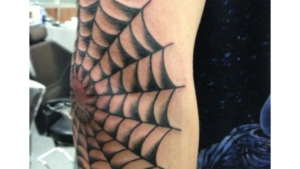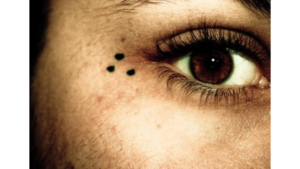In the complex world of corrections, understanding inmate behavior is crucial for maintaining safety within prison walls. Tattoos serve as visual markers, offering insights into an inmate’s affiliations, beliefs, and even criminal history. By deciphering the meanings behind these tattoos, correctional staff can enhance their situational awareness and better protect themselves and their colleagues. Here are 15 prison tattoos and their associated meanings:
1. The 1488 Tattoo: Symbol of White Supremacy

Image Credits: freetattoodesigns.org
The number 1488, or its components 14 and 88, commonly adorns white supremacist inmates. Originating from a quote by Nazi leader David Lane, this tattoo signifies a commitment to racial purity and the ideals of Nazism. Understanding its significance can help identify potential threats within the inmate population.
2. The Cobweb: Sign of Incarceration

Image Credits: Timeless Tattoos Glasglow
A cobweb tattoo often indicates a lengthy prison term, reflecting the notion of being trapped, much like prey in a spider’s web. Typically found on elbows, it symbolizes prolonged confinement and a sense of entrapment within the criminal justice system.
3. The Teardrop: Mark of Violence or Loss

Image Credits: trendfashion2013
Among the most recognizable prison tattoos, the teardrop’s meaning varies regionally. It can signify a long prison sentence, a history of violence, or even mourning for a lost comrade. Recognizing its diverse interpretations is essential for gauging an inmate’s background and potential risk factors.
4. The Three Dots: Representation of “Mi Vida Loca”

Image Credits: Photo Whiserkino
A ubiquitous prison tattoo, the three dots signify a life of chaos and unpredictability. While not tied to a specific gang, it reflects a broader adherence to the gang lifestyle and its inherent risks. Understanding its significance aids in identifying individuals entrenched in the criminal subculture.
5. Playing Cards: Sign of a Gambler

Image Credits: Tattoos Time
Tattoos depicting playing cards or card suits indicate an inmate’s affinity for gambling. In addition to recreational activities, they may also symbolize a willingness to take risks and embrace uncertainty—a trait prevalent in the criminal underworld.





